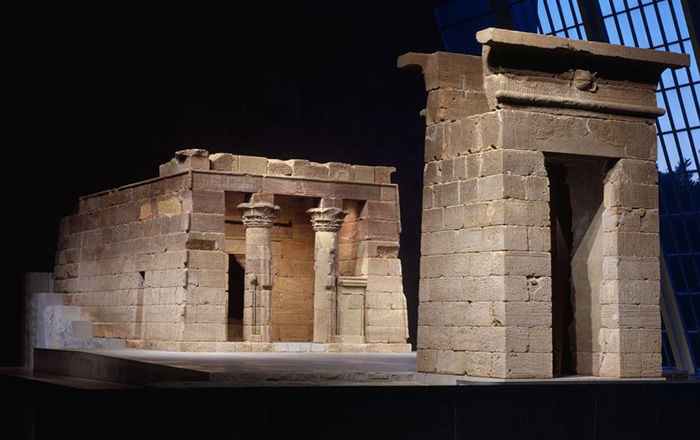Two-handled Jar
Roman Period
This fine two-handled vessel, which likely once had a flat lid, is made of purple- and turquoise-glazed faience, a vitreous material of ground quartz mixed with small amounts of lime and natron or plant ash. At the junction of the vessel’s shoulder and body a stylised band of leaves is applied above a ring of fluting.
These leaves are evocative of the custom of draping urns with bronze or vegetal wreaths, introduced to Egypt by Alexandrian Greeks during the Ptolemaic period. It may also relate to the Egyptian practice of placing garlands around the necks of mummified people, which dates back to the New Kingdom. These also resemble the wreaths depicted on Roman Period funerary panel portraits and masks. While the vessel's decoration suggests that it could have been used in a funerary context, it may also have been used in daily life as a storage jar.
